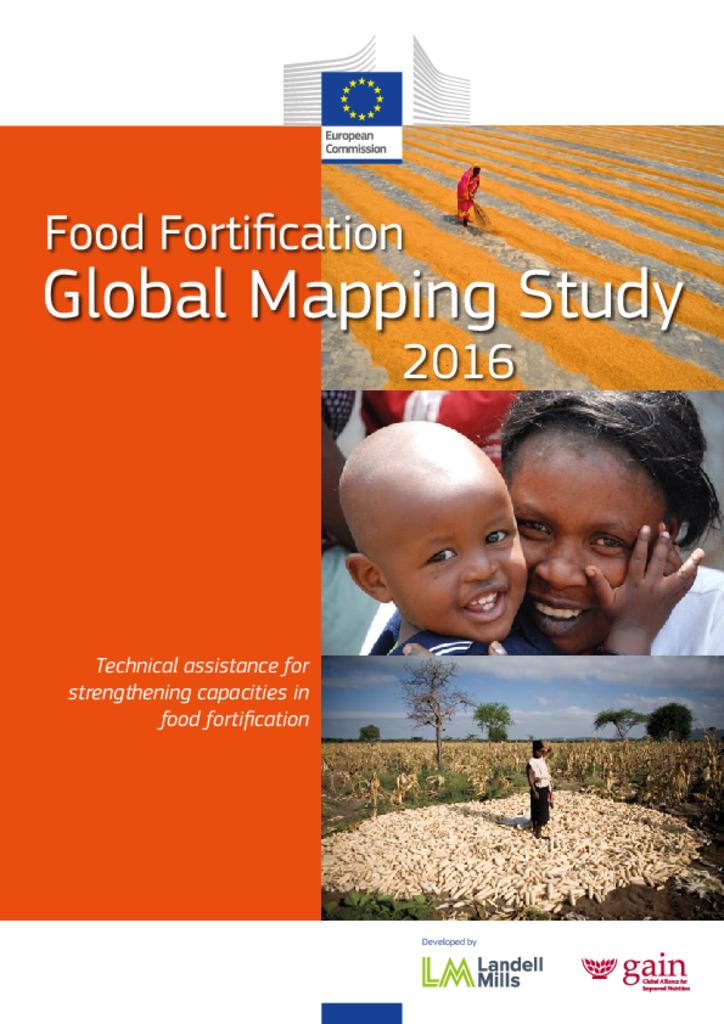This report commissioned by the European Commission (EC) provides a global mapping of food fortification that is intended to serve as reference documentation. The aim of the mapping is to advance understanding on the main features of food fortification including key strategic concerns, operational challenges, compliance issues, coverage, consumption trends, as well as impact on the reduction of micronutrient deficiencies.
For this first edition of the document, it was decided to focus on large-scale fortification of staple foods and condiments, and biofortification. The next version of the document will also include a section on special (fortified) products for nutrition target groups (complementary foods for young child feeding and other products) and home-level fortification.
This Global Mapping study has two main components:
- An analysis of the overall global status and results of large-scale food fortification and biofortification. This presents an overview of the main players and programmes; key successes, challenges and gaps; monitoring and surveillance approaches and results, and some cues for future programming; and impacts on micronutrient status.
- An analysis of each of the main vehicles for food fortification. This part combines an overview of the global approaches and achievements worldwide plus some reflections on national-level experiences with main focus on the period 2000–2015.
It is anticipated that this Global Mapping on Food Fortification will help the EC, partner countries, implementing agencies and policy-makers improve programming and coordination in the nutrition and food sectors, and contribute to expanding, improving and sustaining fortification programmes. This will help ensure fortification programmes achieve public health objectives and support relevant sustainable development goals.
